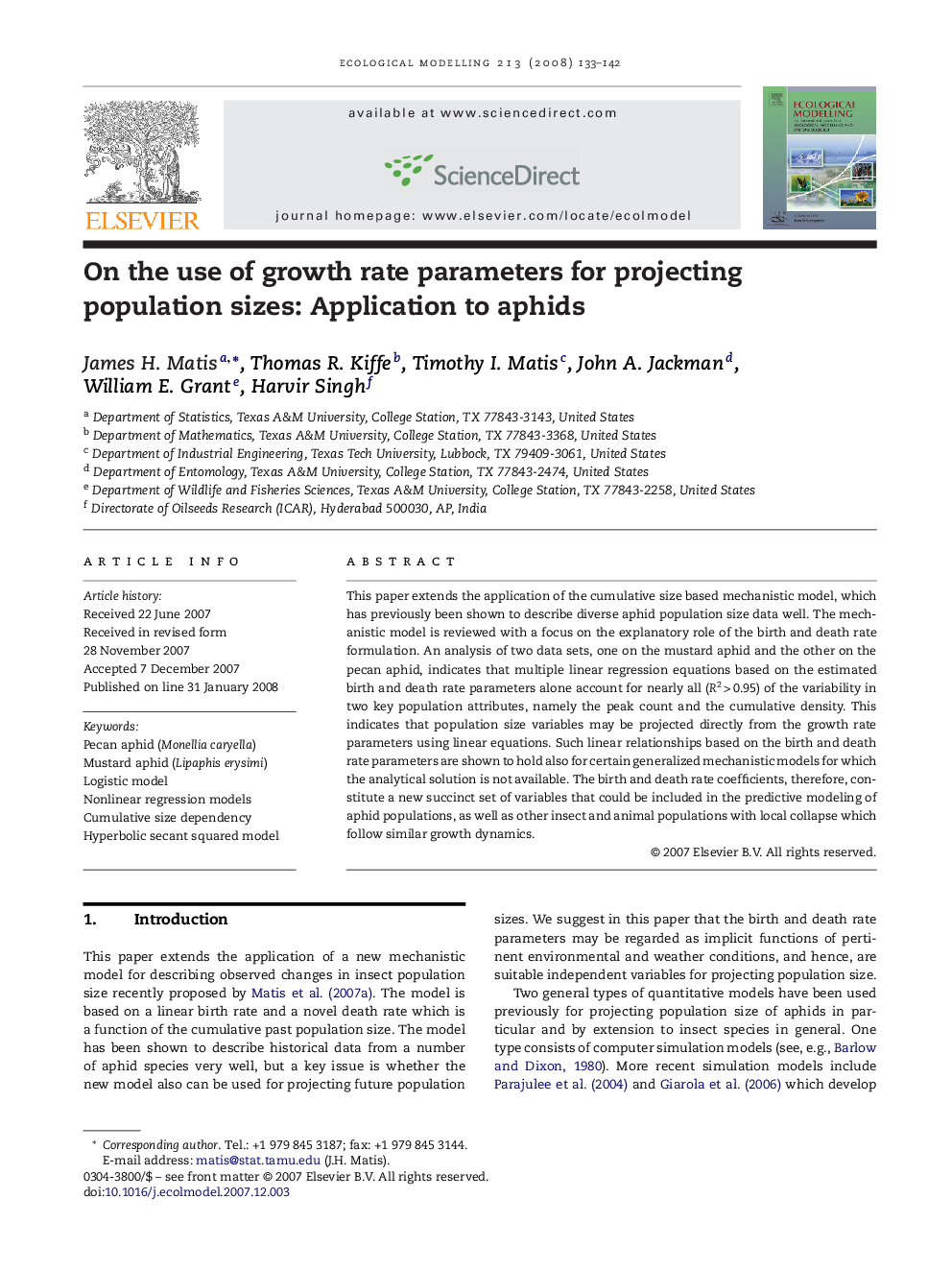| Article ID | Journal | Published Year | Pages | File Type |
|---|---|---|---|---|
| 4377881 | Ecological Modelling | 2008 | 10 Pages |
This paper extends the application of the cumulative size based mechanistic model, which has previously been shown to describe diverse aphid population size data well. The mechanistic model is reviewed with a focus on the explanatory role of the birth and death rate formulation. An analysis of two data sets, one on the mustard aphid and the other on the pecan aphid, indicates that multiple linear regression equations based on the estimated birth and death rate parameters alone account for nearly all (R2 > 0.95) of the variability in two key population attributes, namely the peak count and the cumulative density. This indicates that population size variables may be projected directly from the growth rate parameters using linear equations. Such linear relationships based on the birth and death rate parameters are shown to hold also for certain generalized mechanistic models for which the analytical solution is not available. The birth and death rate coefficients, therefore, constitute a new succinct set of variables that could be included in the predictive modeling of aphid populations, as well as other insect and animal populations with local collapse which follow similar growth dynamics.
